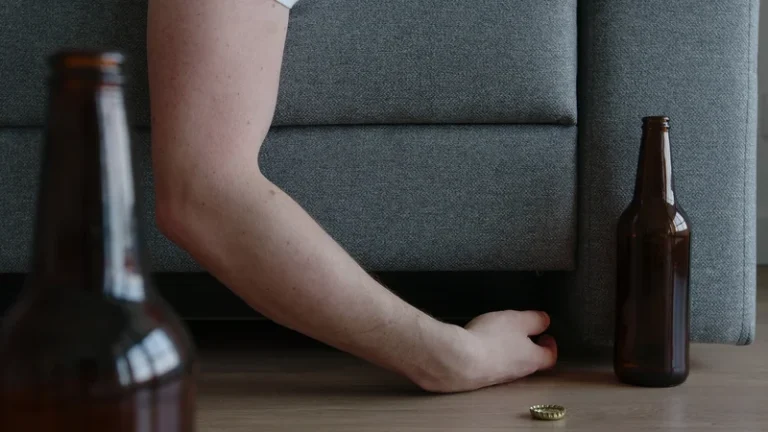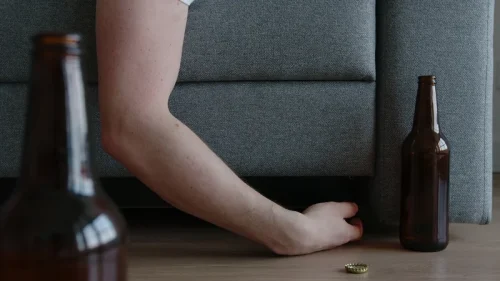
Disulfiram, previously known as Antabuse, was the first medication approved to treat alcohol dependence. The medicine works by causing an intense adverse reaction when someone drinks alcohol. In a randomized, double-blind, placebo-controlled study, Volpicelli and colleagues (1997) found no reduction in craving measured on a 10-point scale among subjects receiving naltrexone. However, these researchers have noted that many subjects dropped out of treatment prematurely and that the clinical effectiveness of naltrexone might be improved by techniques for enhancing medication compliance.

Start the road to recovery
One study conducted in persons who used both alcohol and cocaine found no effects of naltrexone in reducing alcohol and cocaine craving. However, in this study, levels of induced alcohol craving were low (Modesto-Lowe et al. 1997). In addition, a laboratory study that investigated the effects of four doses of naltrexone (ranging from 0 to 100 mg) amphetamine addiction treatment on alcohol-dependent subjects found no effect on the subjects’ urge to drink (Farren et al. 1999). Following repeated administration of alcohol, the brain attempts to restore normal function through physiological adjustments (i.e., counteradaptations) that tend to reduce alcohol’s initial sedating effects (Roberts and Koob 1997). When a person terminates a prolonged drinking session, these counteradaptations are unopposed, resulting in signs and symptoms of acute withdrawal. During this period, craving may represent a desire to self-medicate the anxiety and hyperexcitability that accompany this state.
Mental Health Resources
Forty-eight non-treatment-seeking participants with AUD were randomly assigned to receive semaglutide or placebo at weekly clinic visits. Yes, medications like Naltrexone, Acamprosate, and Disulfiram are FDA-approved to help treat alcohol use disorder by reducing cravings, preventing relapse, and discouraging alcohol consumption. In the second experiment, 51 heavy beer drinkers were pretreated with either a placebo or 50 mg of naltrexone daily, each for 7 consecutive days prior to the drinking sessions. Again, the subjects’ latency to drinking increased during the naltrexone period compared with the placebo. The subjects who received naltrexone also consumed less alcohol, and the time they took to finish one drink was increased. In this experiment, subjects reported less of an urge to drink when they received naltrexone than when they received a placebo (Davidson et al. 1999).
Alcoholic Life Expectancy: Using Calculators and Examining Overall Impact of Alcohol Abuse
- There are various medicines and treatment options available to help people stop drinking.
- The reports have prompted many to hope that GLP-1 medicines like Ozempic will add addiction treatment to their growing list of benefits.
- In the United States, three drugs are approved by the Food and Drug Administration (FDA) for the general treatment of alcohol use disorder (AUD), including cravings (2).
Dairy products in general are good sources of calcium, vitamin D, and other vitamins and minerals that you’ll need to replenish to stay healthy and fight cravings. The fiber-rich, complex carbohydrates in whole-grain breads and foods like brown rice, quinoa, barley, and farro are digested more slowly, which help keep blood sugar levels steady. This is key to keeping cravings under control, especially when your body is used to using alcohol as a quick form of fuel. If certain environments, scenarios and places tempt you to drink, the simplest and most effective approach may be to avoid them, at least temporarily. For others, regular follow-up with their primary doctor should be enough and can work, Holt says.

- Payment of benefits are subject to all terms, conditions, limitations, and exclusions of the member’s contract at time of service.
- The findings, published in JAMA Psychiatry, showed that weekly injections of semaglutide – compared with placebo injections – reduced alcohol craving, drinking quantity and the frequency of heavy drinking days in adults with symptoms of alcohol use disorder.
- While detoxing at home without medication is possible, treatment programs at a professional rehab facility are highly recommended.
- Unlike acamprosate, which helps regulate neurotransmitters to reduce cravings, disulfiram deters you from drinking by causing an intensely unpleasant reaction when alcohol is consumed.
- Several medications have demonstrated their ability to reduce alcohol consumption in humans, and several of these drugs are reported to reduce alcohol craving.
As mentioned above, integrating a support system and having ongoing check-ins with your doctor will help you progress and have a more effective response to the medication. By following these steps, you can effectively start and maintain medication treatment for AUD, significantly increasing your chances of achieving lasting sobriety. The average Breathalyzer-measured breath alcohol concentration during the monitored post-treatment session reached 0.092 g/dL in the placebo group, and 0.052 g/dL in the semaglutide group. If you want to get sober, but are struggling to stop, these drugs are most effective when combined with therapy. This is a drug that’s currently being researched and specifically with people who are suffering from alcoholic cirrhosis.
When you have alcohol use disorder, just thinking about alcohol triggers a pleasurable response in the brain. Other people might only need to take the medication at times when they know they’ll feel triggered to drink. For example, if someone usually relapses at the holidays or the anniversary of the death of a loved one, they might decide with their doctor to take it just around that time, Schmidt says. It’s important to note that disulfiram is not used to manage withdrawal symptoms.
- In the U.S. alone, it contributes to 140,000 deaths annually and nearly 3.6 million years of potential life lost.
- Coping-skills therapy attempts to teach patients to identify and handle situations that place them at high risk for relapse to drinking.
- Three of the four medications approved in the United States or Europe for treating alcoholism are reported to reduce craving; these include naltrexone (ReVia™), acamprosate, and tiapride.
- A random, double-blind, placebo-controlled study (Gottlieb et al. 1994) also found beta blockers to be effective in reducing alcohol craving during withdrawal and early abstinence (to 1 year) as measured on a five-point scale.
Generally, the more alcohol you drink reduce alcohol craving on a regular basis, the longer it takes for cravings to subside. Even when you’ve resolved not to drink or to drink less, temptations to have a drink are normal, and the interaction of alcohol with the body’s own biochemistry makes the desire to keep drinking very predictable. Understanding and recognizing these factors will help you reduce or manage cravings more effectively. Acamprosate (Campral) eases withdrawal symptoms — such as insomnia, anxiety, restlessness, and feeling blue — that can last for months after you stop drinking. Some of these medications have been around for decades, but fewer than 10% of the people who could benefit from them use them.
Additional medications are used empirically by clinicians to treat alcohol dependence, and several other agents are being developed. MAT is highly effective in treating AUD, significantly improving long-term recovery rates. By reducing cravings and withdrawal symptoms, MAT helps individuals stay focused on their recovery and decreases the likelihood of relapse.

Other Medications
HealthDay News — Low-dose semaglutide seems to reduce craving and certain drinking outcomes in alcohol use disorder (AUD), according to a study published online Feb. 12 in JAMA Psychiatry. Before starting naltrexone, ensure you’ve been abstinent from alcohol for at least 7-10 days, as taking it too soon can cause withdrawal symptoms. Discuss any other medications or supplements you take with your doctor to avoid interactions.
What medications can help me stop drinking?
In some studies the patient rates his or her craving on a visual analog scale (VAS). In this approach, the patient places a mark on a line that is approximately 4 inches long and divided into arbitrary units beginning with zero. One week prior to the first injection, researchers invited participants to drink their preferred alcohol beverages over a two-hour period in a comfortable lab setting, with instructions to delay drinking if they wished. As a specific example, a small study published in the journal Drug and Alcohol Dependence involved 140 adults and indicated that a short session of aerobic exercise reduced cravings for alcohol (10). Although the available evidence is mixed or lacking in humans, the following natural supplements, herbs, and vitamins might help curb alcohol cravings (5, 6, 7). The protein in poultry and fish helps in the production of dopamine, which can help improve your mood as you fight alcohol cravings.
